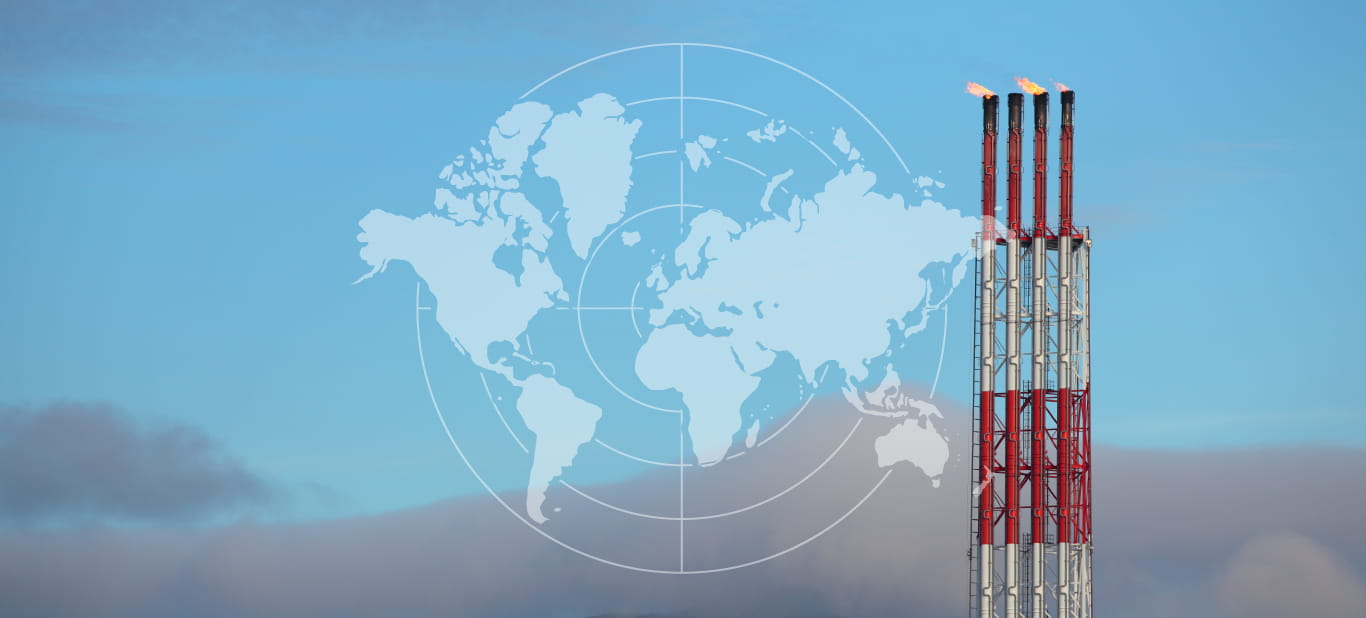Methane. An incredibly powerful greenhouse gas when released into the atmosphere in its raw or unburnt form. But natural gas as a clean fuel can contribute to the reduction in urban pollution and greenhouse gas emissions. Even Greenpeace has publicly accepted the important role natural gas plays in acting as a clean-fuel ‘stepping stone’ towards energy less reliant on fossil fuels, and countries are now starting to look to natural gas as a cleaner alternative.
In April 2017, the United Kingdom enjoyed its first 24-hour power generation period completely free of coal since 1880, and in the United States, natural gas has surpassed coal as the nation’s leading power-generating fuel source.
However, with the expansion of onshore extraction and natural gas processing, there’s still cause for concern. Fugitive emissions – or unintentional gas leaks – are happening on a much greater scale than ever before, with an estimated $2 billion of natural gas lost to leaks each year.
Reasons for uncertainty
Over a 20-year period, raw methane is 28 times more potent as a greenhouse gas than CO2. Experts agree that if natural gas is to rival coal as a means of reducing greenhouse gas emissions, then raw methane emissions must be held to less than one percent of total production.
In the United States, raw methane emissions estimates have been ranging from two to 17 percent of total production. Alarmingly, the United States Environmental Protection Agency (EPA) has recently increased its estimate of emissions in upstream gas operations by 134 percent, bringing the overall total to 1.4 percent of total production (which from time-to-time they flag as a possible underestimation), or 40 percent higher than the one percent target to provide comparative advantage over coal.
Many are asking why these estimates vary so widely, or why there’s a methane emissions footprint visible from satellites to an extent that is alerting regulators to a growing problem? To answer these questions, we must look at the limitations in the current methods of measurement.
Over a 20 year period, raw methane is 28 times more potent as a greenhouse gas than CO2
Methods of measurement
There several regulator-approved methods of measurement for fugitive emissions. While they have been successful in detecting emission in the past, they are limited.
Scenario one
The first method of measurement is to apply emissions factors and schedules provided by regulators to equipment that has the potential to leak. The emissions-per-equipment item is then aggregated to a plant total to come up with a volume of fugitive emissions.
Limitation: Doesn't consider the actual leak rates or if in fact the equipment is leaking at all.
Scenario two
The second method of measurement is what is referred to as EPA Method 21. A measurement instrument (i.e. a flame ionization detector) is held near the stream of a suspected leak and it measures the concentration of fugitive gas in the atmosphere, typically on a parts-per-million basis. This method verifies if there is a gas leak, providing vital information for repair programs.
Limitation: Only gives you a concentration reading so operators can’t tell if the leak is big or small. It doesn’t determine where the leak is not – operators need to go to where they think the leak is.
Scenario three
The third method of measurement, which has been added to the regulator-approved list of measurement recently, is optical-gas imaging (OGI). OGI is an infrared sensor capable of operating within the thermal spectrum. It generates an image of a gas leak that can be seen with the human eye. For the first time, operators see what no other method could allow them to see: a gas cloud.
Millions of television-news viewers were introduced to OGI when they saw EPA footage of the Aliso Canyon gas leak in October 2015. It was reported to be the worst gas leak in United States history, with 97,100 tons of methane and 7,300 tons of ethane released into the atmosphere. Comparisons of this leak have been made to the equivalent carbon footprint of 1.4 million cars or six coal-fired power plants.
The Aliso Canyon leak showed us the important role OGI can play in measuring a leak in terms of ‘how much’ — something the other methods could not do. However, the more OGI is deployed the more practitioners realise that, contrary to what EPA schedules of leak estimates assume, a small number of very large leaks are often responsible for most of the emissions. Further, many of the other equipment items are either not leaking at all or have such small emissions rates that they are not economically viable to fix.
Compare this to Method 21. You could survey your entire plant and either not know which leaks are large or small or you could be unaware of a super-leak coming from a part of your plant that's not surveyed at all. With OGI, operators can see where their largest leaks are and deal with them appropriately.
Limitation: only provides qualitative data.
You can’t improve what you can’t measure
While OGI is a massive leap forward, one fact remains; an IR sensor does not provide quantitative information about a fugitive emission. It only provides a qualitative image of a leak, potentially showing either false positives (e.g. a moisture vapor cloud) or false negatives (e.g. because of range, focus, shadows or other issues). For energy providers to run an accurate leak repair program for their fugitive emissions, they must be able to quantify the emission rate from leaking equipment.


